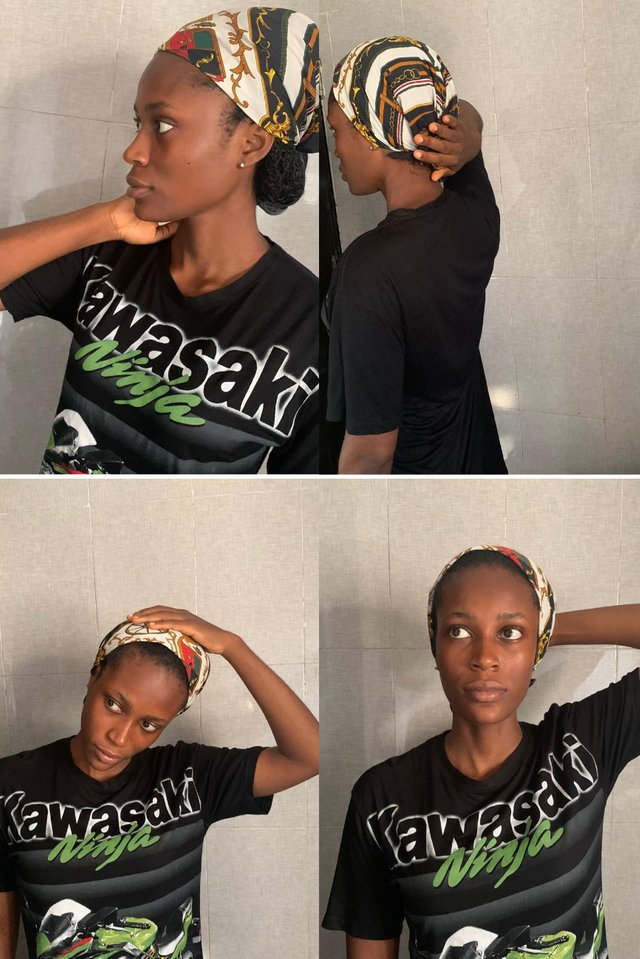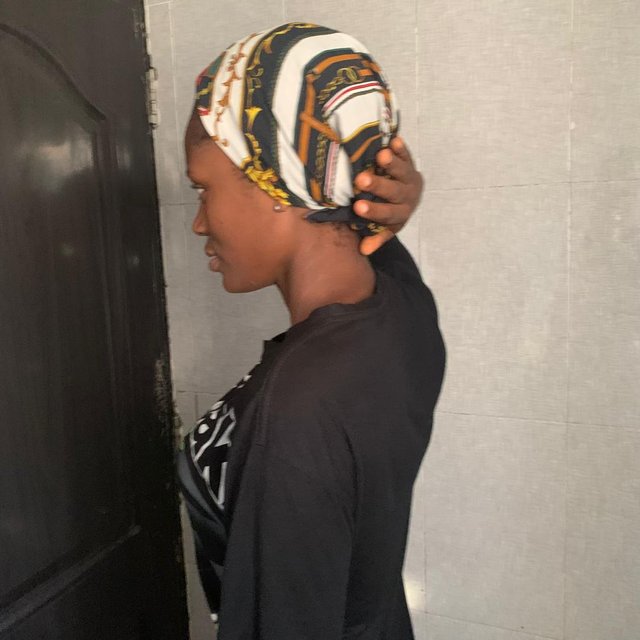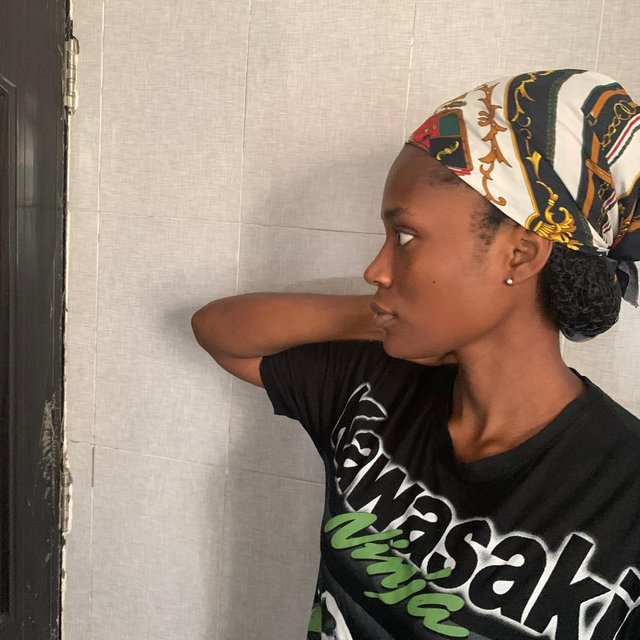Steemit Learning Challenge-S21W3; Cervical Radiculopathy"
Hello everyone, good evening to you all. I'm so excited to be in this class, it was informative.

| What's Cervical Radiculopathy? Write in your own words after getting knowledge from the lesson post. |
|---|
Cervical Radiculopathy also known as pinched nerve is a condition that occurs which a nerve root in the neck becomes Compressed or irritated which can result to pain. The neck is made up of seven bones known as Vertebrae. The nerve branch out from the Spinal cord between this bones, and when any of these Nerves get pinched, it results to sharp pain.
| Some of the major symptoms includes. |
|---|
- Numbness in the hand and the arm.
- Difficulty in doing some tasks like holding and carrying things.
- Sharp or excruciating pain from the neck down to the arm.
- Reduced reflexes in the arm or hand.
- Headache
| Causes of Cervical Radiculopathy |
|---|
- Degenerative Change
As human being advance in age, the discs between the Vertebrae in the neck region begins to wear off, this discs acts as shock absorber but when they gradually wears off due to aging, it becomes more stiffer and therefore results to pain, stiffness, numbness and potential nerve root Compression
- Injury
Serious trauma to the neck region which can occur as a result of fall, Car accident, Sports can have serious impact on the nerves in the Neck region.
- Spinal stenosis
This occurs when they is a narrowing of the Spinal Canal. When it occurs, it can result to pressure on the nerve cells resulting to pain, numbness and weakness.
- Herniated Discs
It is also known as ruptured disc. It occurs when the soft jelly like center of one of the discs In the Spine protrudes out and passes pressure
on a nerve and the result is a excruciating pain, numbness and weakness.
- Bone Spurs
This occurs when bony growth occurs on the bone around the joint. It is often as a result of aging. It also results to pain and numbness because it exerts pressure on the nerves.
| Treatment for Radiculopathy |
|---|
- surgery
Surgery can be performed to remove bone spurs, herniated disc in order to reduce pressure on the nerve cells.
- Medication
Some pain relieving drugs like Ibuprofen, Diclofenac, Acetaminophen can be taken inorder to relieve.
- Physical therapy
Exercises like Isometric Neck Extension, Isometric Neck Rotation can be performed to relieve pain.
- Steroids Injection
Steroid injections like Hydrocortisone, Dexamethasone can be given to the patient on the affected area to reduce pain.
| Tips for Preventing Radiculopathy |
|---|
- Good posture
Always maintain a good posture especially when writing, standing, sleeping and working in the house inorder to reduce stress on the nerves.
- Exercise often
Practice exercises like stretching in order to strengthen the muscles.
- Healthy weight
Watch your weight inorder to prevent putting pressure on the Spine.
| How would you diagnose a Cervical Radiculopathy? Any clinical investigation or assessment tests? |
|---|
Cervical Radiculopathy is diagnosed through a Combination of medical history review, Physical examination and diagnostic tests. The process includes.
- Medical history review
The patient will be asked for his Medical history to know if he/she had a Surgery, Accident or Medical Condition that would be the cause of the Nerve Compression.
- Physical examination
The patient will be examined for symptoms like numbness, pain, and decreased reflexes in your arm or hand. They would also ask when you noticed the symptoms and how long it has lasted.
| Neurological Exam |
|---|
This is to check the patient reflexes, Muscle and also to look out for sensation in the arms and hands.
- Spurling Test
This test involves asking the patient to stretch his neck backward and rotate his head to one side while applying pressure on the head. If an Excruciating pain is felt, then there is Radiculopathy.
- Straight Leg Raise Test
Here, the Patient is asked to raise his leg while lying on his back.
| Diagnostic Tests |
|---|
- X-ray
It can be carried out to discover any abnormality in the bone resulting to Radiculopathy.
- MRI(Magnetic Resonance Imaging)
This test shows soft tissues structures in the body such as Ligament and Spinal cord. Therefore, it helps to identify Herniated Discs or anything that would lead to nerve Compression.
| Try to practice at least 3 exercises that you have learned from the lesson. Share images, gifs or videos while practising. |
|---|
- Upper Trapezium stretch

To perform this, I placed my hand at the top of my head and gently pull my head bringing it close to my shoulder.
- Isometric Neck Extension

I maintained a good posture and placed my hand at the back of my head and gently applied pressure while pressing my head against my head. I maintained this position for about 5 seconds before releasing myself.
- Isometric Neck Rotation

This can be performed on the both side. To perform that, I gently rotated my head to one side with the help of my arm. I did that too with the other side while applying pressure. I released myself after holding on for a few seconds.
| Share your review after performing these exercises either on yourself, healthy individual or patient. |
|---|
Before the exercise, I was feeling pain in my neck, infact I had difficulty while trying to move my head before the Previous night because I sat down on my bed instead of using a seat and reading tables to mark over 300 Students Scripts but after carrying out the exercise I felt a quite relieve. It wasn't easy the first time because it's been a while I carried out any exercise but at time went on, I was able to stretch my neck well.
I really learnt a lot from this class, it helped me to know that some ailment can be cured with exercises. Thanks @ashkhan for this wonderful lecture, It was quite educating. Thanks for reading through my post. I invite @ukpono, @ogechukwu-martha and @m-fdo to participate in this contest.
Thank you for understanding the lesson and sharing your assignment; I hope that you will enjoy this week's lesson and try to implement it in your life if you see any such case.
Observations
Task 1 (2.9/3)
You have shared a great knowledge about cervical radiculopathy, and it's causes, symptoms, treatment, but you can also add the vertebrae involve in cervical radiculopathy. I appreciate your effort.
Task 2 (3/3)
In the second question, you tell us about how you have to assess a patient by doing the physical examination, history taking, investigations of patients and specialized tests. You have share good knowledge but the best test for nerve examination is NCS nerve conduction study & EMG to assess. Great.
Task 3 (3/4)
You try the isometric cervical extension, rotation and upper trapezoius stretch. But while performing Isometric exercises you have to apply resistance & apply that much force that didn't allow head movement. It would be better to share gifs instead of images as these exercises need to be shared in gif or video form. You apply the trapezoius stretch in correct way. Remember always apply heating pad to relax your muscles before performing these exercises. I appreciate your efforts.
Overall you made a great attempt to answer all the questions. I appreciate your efforts. But next time try to avoid the above written suggestions. Keep learning and try to implement your knowledge to the people suffering from any cervical radiculopathy. Thank you.
0.00 SBD,
11.67 STEEM,
11.67 SP
Thanks for your comment and corrections.
@tipu curate
Upvoted 👌 (Mana: 3/6) Get profit votes with @tipU :)